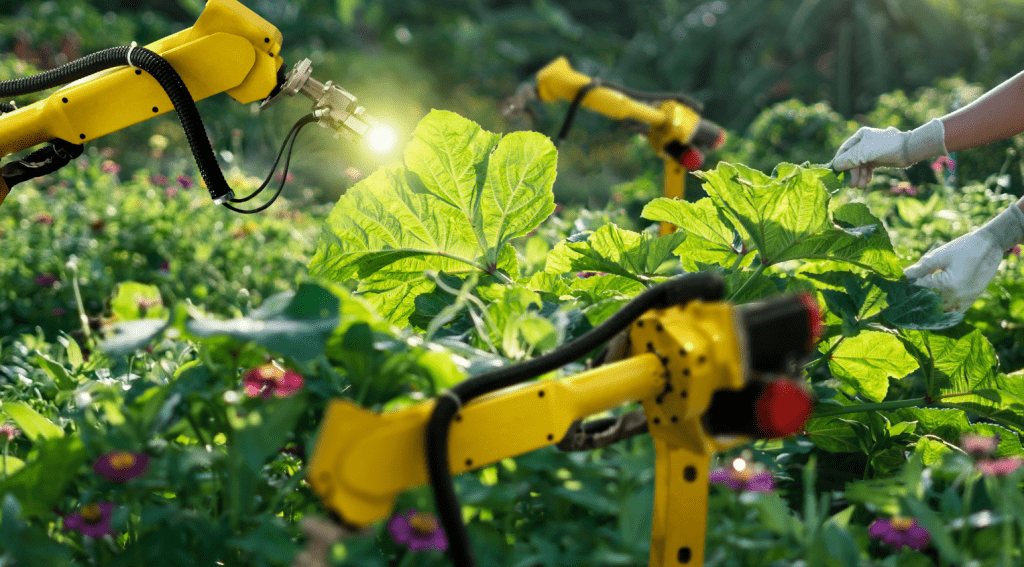
Throughout history, humans have sought ways to improve agricultural production, from the invention of rudimentary tools to the development of advanced cultivation techniques. Today, technology has taken an exponential leap, and its application in large-scale agriculture is revolutionizing the way food is produced.
One of the areas where technology is having a significant impact is in agricultural machinery. Autonomous tractors are a clear example of this evolution. These vehicles are equipped with satellite navigation systems and advanced sensors that allow them to operate independently in the fields.
They can perform tasks such as planting, fertilizing and harvesting with millimeter precision, resulting in greater efficiency and less waste of resources. Furthermore, these tractors can work 24 hours a day, 7 days a week, without the need for rest, which significantly increases productivity.
Another advantage of autonomous tractors is that they can adapt to different terrain conditions and different types of crops. Thanks to their sensors and artificial intelligence systems, these vehicles can automatically adjust their speed, direction and ground pressure to ensure optimal performance in each situation.
This not only improves efficiency, but also reduces soil compaction and minimizes crop damage.
The use of drones
Another technology that is gaining ground in large-scale agriculture is the use of drones. These small unmanned aerial vehicles are equipped with high-resolution cameras and specialized sensors that allow them to collect detailed data on crops. They can detect problems such as pests, diseases or nutritional deficiencies in plants, allowing corrective measures to be taken in a timely manner.
In addition, drones are also used for precise fumigation of crops, thereby reducing the use of pesticides and minimizing their environmental impact.
Drones can also perform mapping and surveying of fields, generating detailed maps that help farmers better plan their crops and optimize the use of resources.
For example, drone-generated maps can identify areas with different soil types or moisture levels, allowing irrigation and fertilization strategies to be adapted accordingly.
Precise irrigation and fertilization systems
Water management is another critical aspect in large-scale agriculture, and technology is playing a vital role in this regard. Precise irrigation systems, such as drip irrigation or subsurface irrigation, allow water to be delivered directly to the roots of plants, avoiding waste and optimizing the use of this valuable resource.
These systems are controlled by soil moisture sensors and intelligent algorithms that automatically adjust the amount of water supplied based on the specific needs of each crop.
In addition to optimizing water use, precise irrigation systems can also help prevent problems such as soil erosion and salinization.
By supplying water in a controlled and localized manner, runoff is reduced and water is prevented from washing away the top layer of soil. Likewise, by avoiding waterlogging and excessive evaporation, the accumulation of salts on the soil surface is reduced, which can be harmful to crops.
Regarding fertilization, technology is also making a difference. Precise fertilization systems use sensors and data analysis to determine the exact nutritional needs of each plant.
This allows nutrients to be applied selectively, avoiding excess fertilizers that can contaminate the soil and nearby waterways. Additionally, fertigation, which combines irrigation with the application of fertilizers, allows for more efficient distribution of nutrients, resulting in better crop yields.

Big data and predictive analysis in agriculture
The use of big data and predictive analytics is another area where technology is having a significant impact. Large farms generate a huge amount of data, from information on weather and soil conditions to data on crop yields and machinery efficiency.
Using machine learning algorithms and advanced analysis techniques, this data can be processed to obtain information to help make informed decisions.
For example, predictive analytics can help anticipate potential problems, such as pest outbreaks or adverse weather conditions, and take preventive measures before significant damage occurs. It can also help optimize crop planning, determining the most suitable varieties for each area and the optimal planting and harvesting dates based on historical data and climate forecasts.
However, it is important to note that implementing advanced technologies in large-scale agriculture also poses some challenges and ethical considerations. On the one hand, the initial investment in these technologies can be high, which can limit their access to small and medium-sized farmers. This could generate a technological gap and aggravate existing inequalities in the agricultural sector.
It is essential that policies and programs be developed that encourage the equitable adoption of these technologies, providing financial support and training to farmers at all levels. Furthermore, it is important to promote collaboration between the public sector, the private sector and academic institutions to develop affordable technological solutions adapted to the needs of small and medium-sized farmers.
Furthermore, automation and digitalization of agriculture can also have impacts on rural employment. As machines and algorithms take over tasks previously performed by human workers, there is a risk of job losses in some areas. It is crucial that these issues be addressed and solutions sought to ensure a just transition to more technological agriculture.
Likewise, it is important to promote the creation of new jobs in areas related to technological agriculture, such as software development, data analysis and the manufacture of specialized equipment.
Another important consideration is the security and privacy of the data generated by these technologies. It is essential to establish strong regulatory frameworks and ethical practices to ensure data protection and prevent misuse.
This involves developing robust standards and security protocols for the collection, storage and use of agricultural data, as well as establishing informed consent mechanisms for farmers. Also, it is important to promote transparency and accountability in the use of data, ensuring that farmers have control over their information and can benefit from its value.
Potential of advanced technologies in agriculture
Despite these challenges, advanced technologies in large-scale agriculture have the potential to revolutionize the way food is produced and contribute to global food security.
Technological agriculture can also play a crucial role in combating climate change and environmental degradation. By reducing the use of water, fertilizers and pesticides, and optimizing agricultural practices, these technologies can help mitigate greenhouse gas emissions and preserve natural resources.
It is important to address the challenges and ethical considerations associated with these technologies, only then can the full potential of these technologies be harnessed to build a more prosperous and sustainable agricultural future. Technological agriculture is not a panacea, but it is undoubtedly a powerful tool to face the food and environmental challenges of the 21st century.

Grupo Ruiz is a business conglomerate based in the province of Tucumán, Argentina. Founded in 1994 with the creation of Paramérica SA, in a decade it positioned itself as a world leader in the export of black beans and lemons.
Source: https://reporteasia.com/economia/2024/06/08/tecnologias-avanzadas-agricultura-gran-escala-eficiencia-productividad

